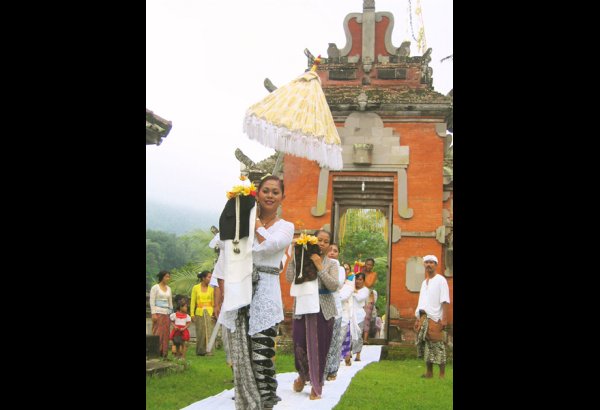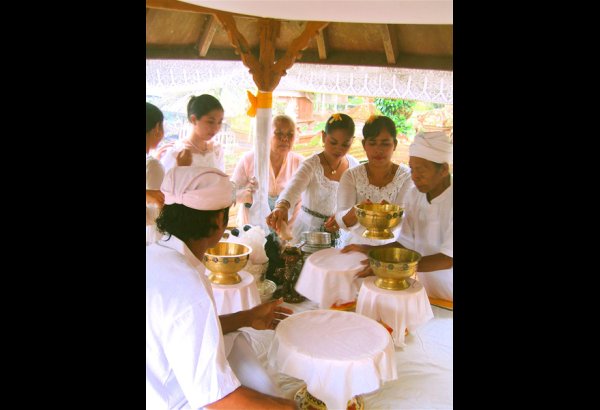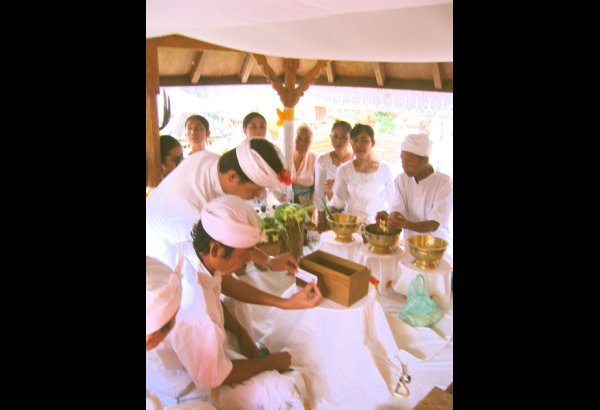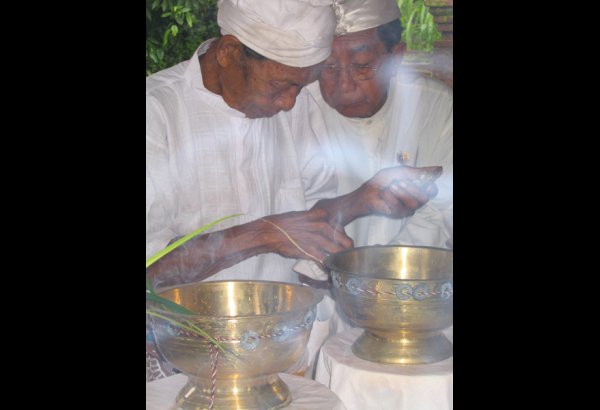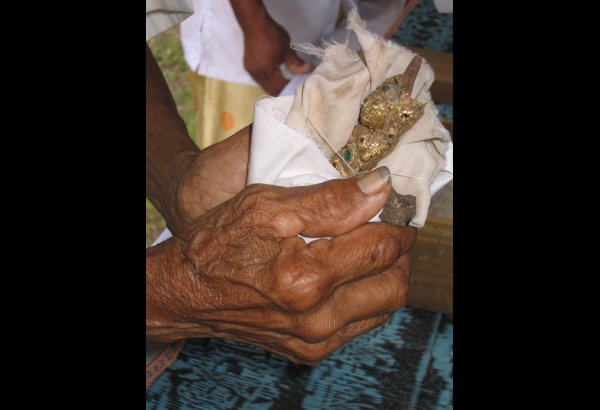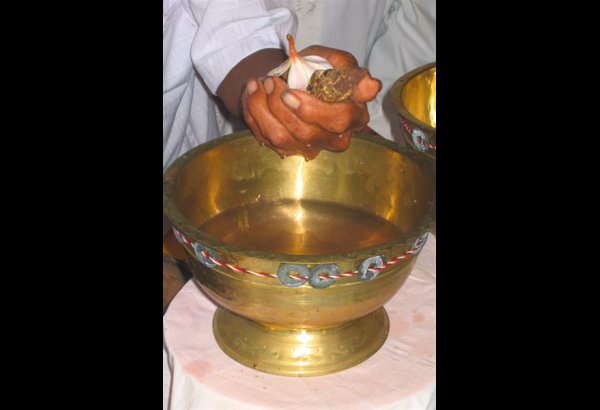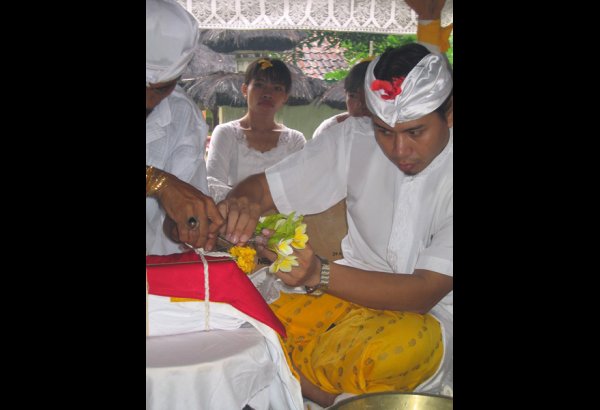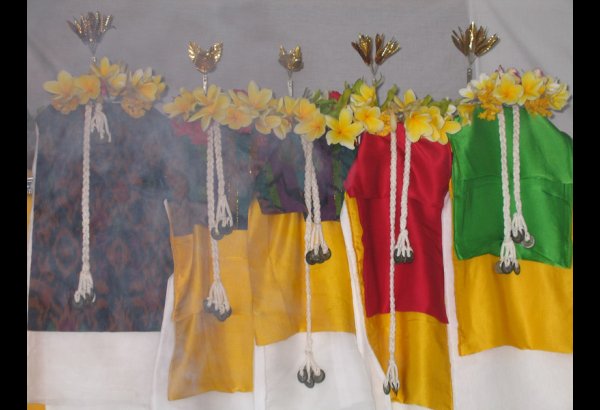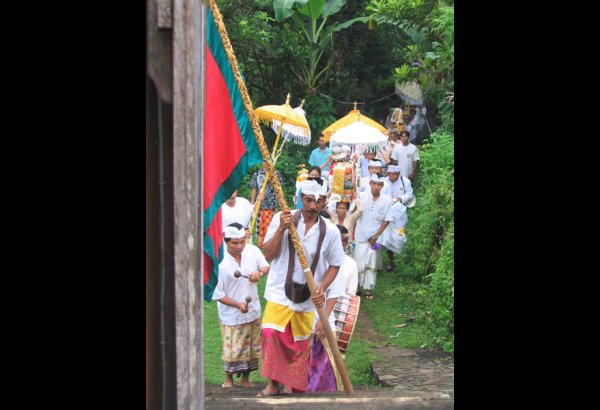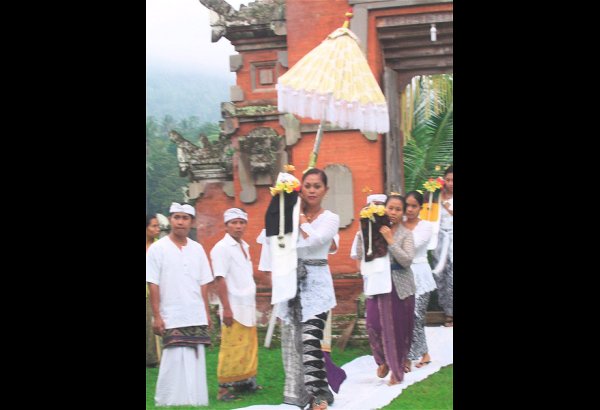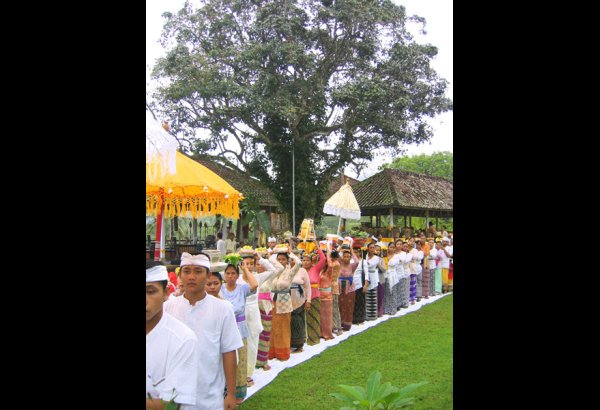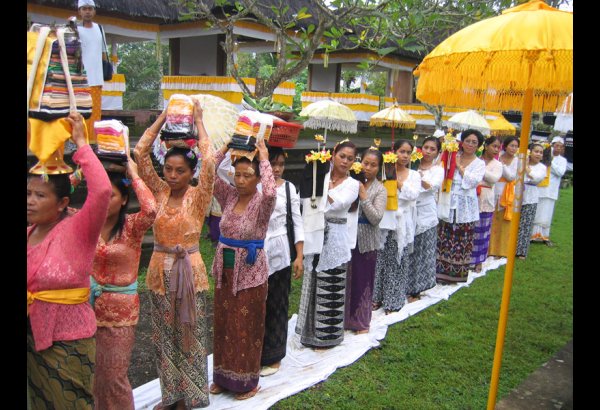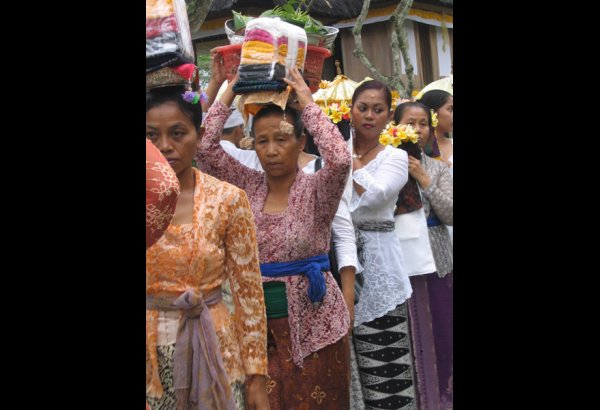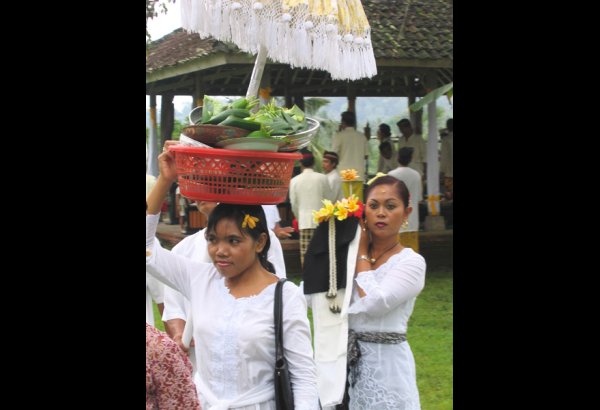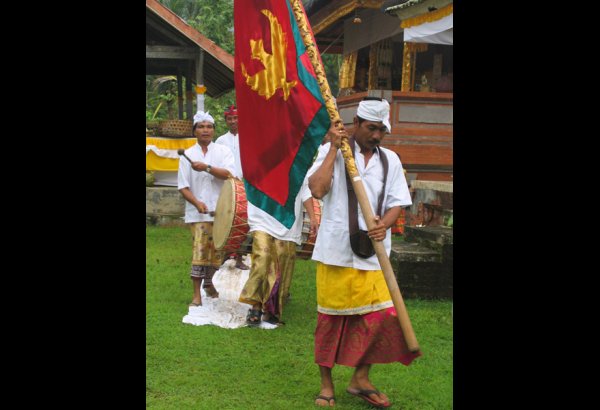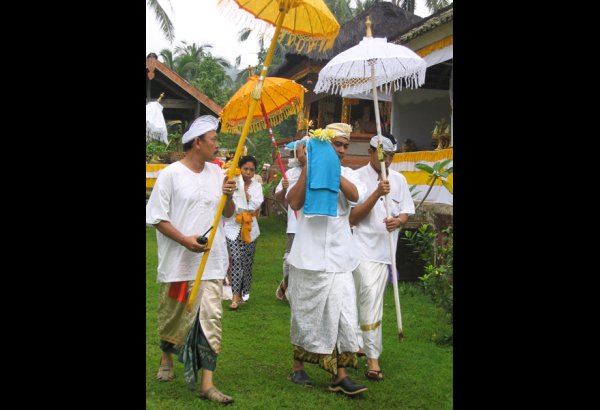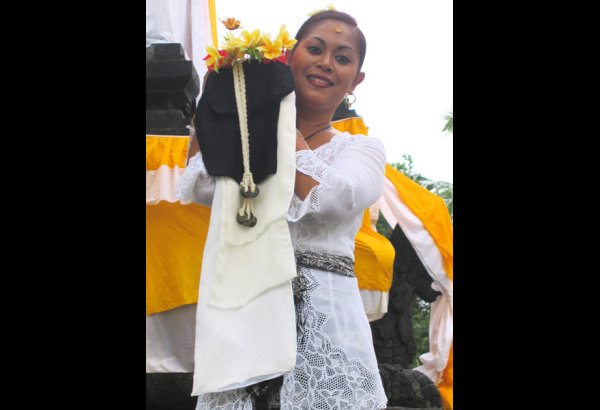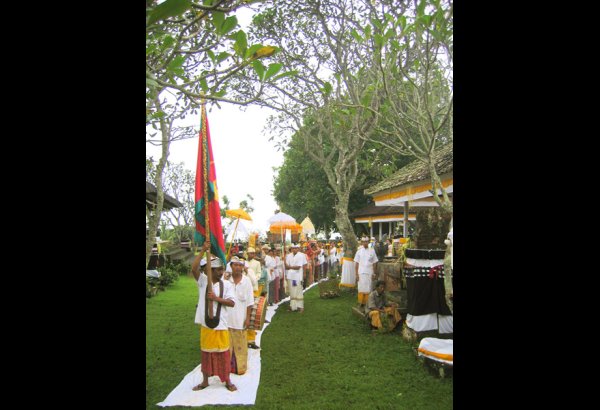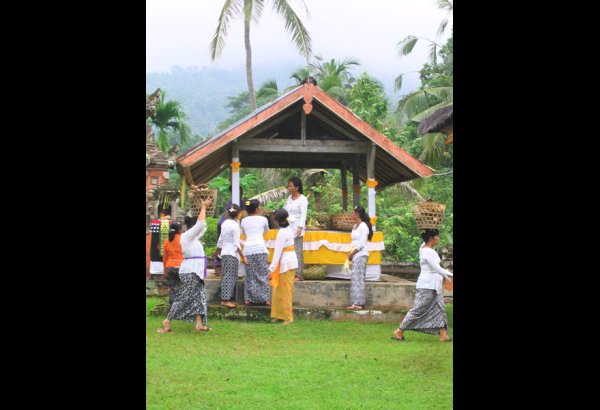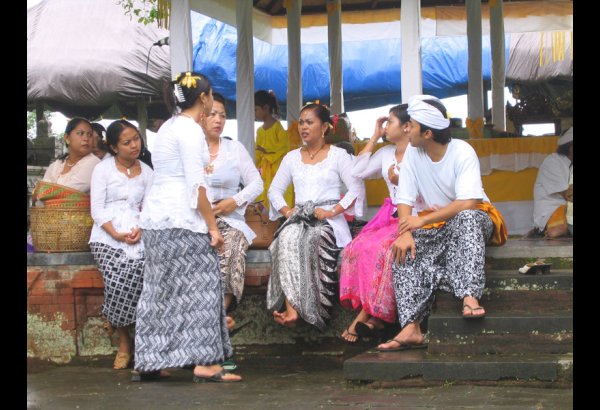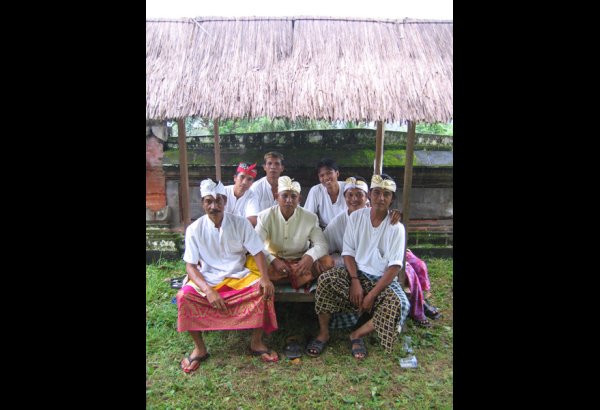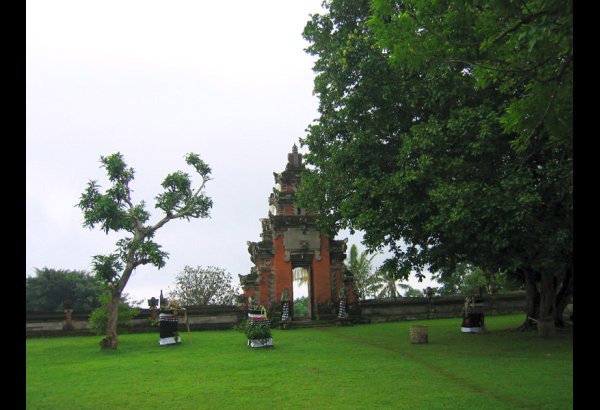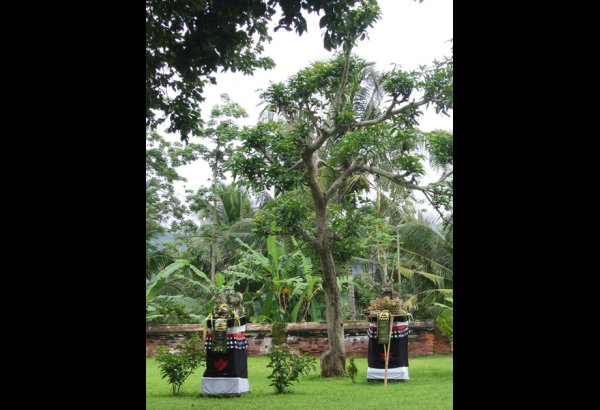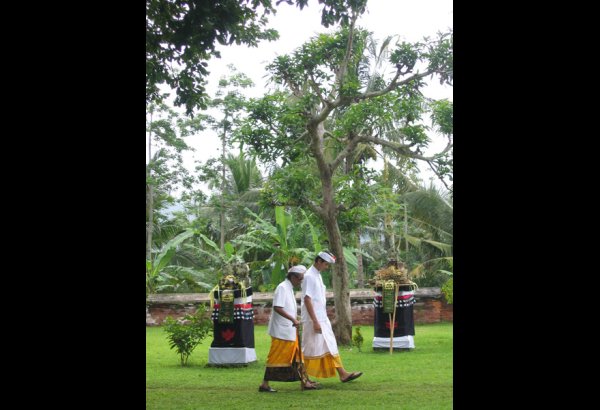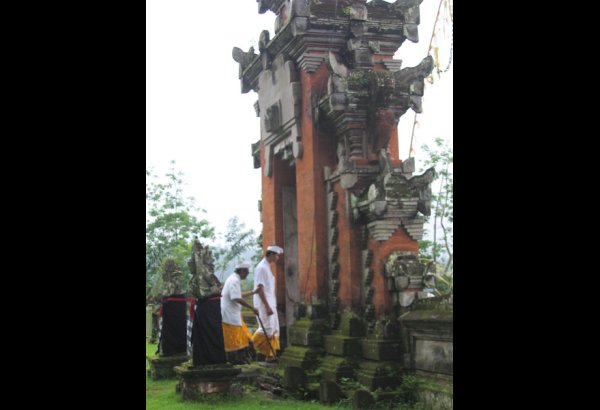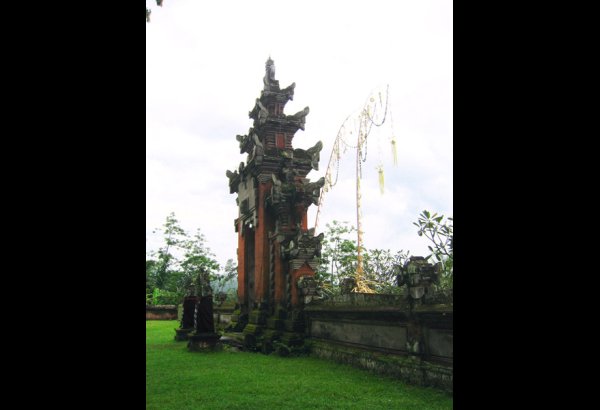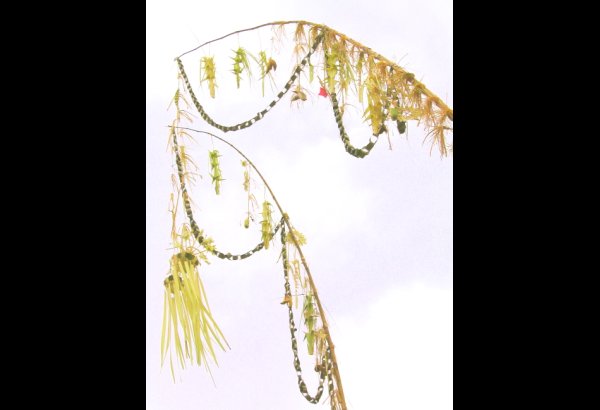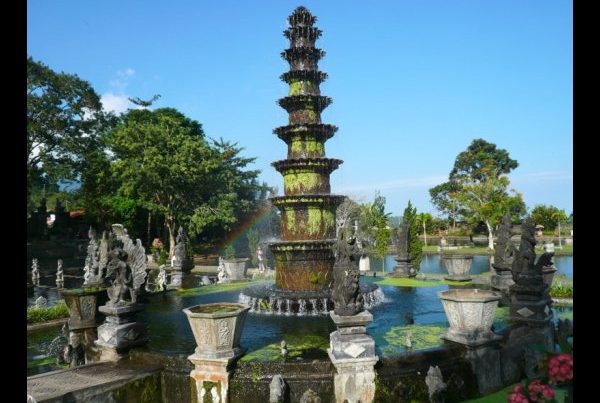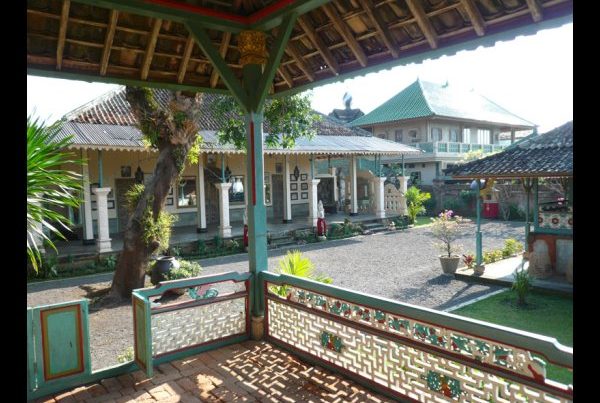Pura Bukit, bringing out the gods
That day, at dawn, before light awoke from its slumber, some members of the royal family of Karangasem, the children of Prince Anom, walked up the dirt path at the foot of Mount Lempuyang, on the north-east corner of Bali, heading towards the temple of Pura Bukit, where the thirty symbols of the gods, pratima, have been hidden away for fifteen years.
Standing in front of the Gedong Pesimpenan, the building where the icons of the gods are kept safe, the unlocking of the doors reveals a heap of grey wooden boxes, carefully brought out by the temple priests. The head of the royal family of Karangasem, the Prince, Professor Anak Agung Gede Putra, is there, with Princess Mirah, and her brothers. They are devoted to traditions secured by the last King of Karangasem, Anak Agung Agung Anglurah Ketut Karangasem, the Raja di Raja of Bali, who built and rebuilt numerous temples throughout the region. Before the king died in 1966, he donated land to all temples to ensure that worship would continue indefinitely.
As they open the wooden boxes, one by one, to our surprise, what appear are effigies, idols of gold, in all manners and forms: coins, shapeless lumps of gold, squares, eggs. Even more astonishing is the attention each of these tiny icons receives. Somehow the Balinese seem truly to sense the life of the figurine or project their souls into this miniature of gold, this microcosmical man, this purusa, so carefully held in their hands, washed, cleansed with smoke, herbs and water, before finally the spirit, purusa, is wrapped in the cleanest cloth, laid down again inside the wooden box and wrapped in holy cloth.
Anak Agung Made Arya, princess Mirah’s brother and the ceremonial head of the royal family of Karangasem, recalls each icon’s name, number and color as if they were living beings standing before him. And as the royal family and their people carry the boxes on their heads and shoulders in the procession to the main temple, one may marvel at the capacity of the Balinese to truly sense the spirit within.
In Hindu religion, there are three ways to sense the gods or, rather, there are three stages to a deity’s progressive being in this world: his presence, pratistha, his apparition, utpatti, his incarnation, sthiti. The Balinese know, through hints and winks and movements, that the gods are there: in the wind that passes by, that makes you shiver when the doors open to the shrine; in the sudden flash of the pasepan, the purifying herbal fire that precedes the actual prayer; in the intoxicated movements of the people carrying the gods. Prior to this moment of incarnation, sthiti, there is, the advent, the wait.
And then, as the royals carry the gods three times around the temple ground, and finally place the idols within each shrine, you sense that the gods have arrived.

